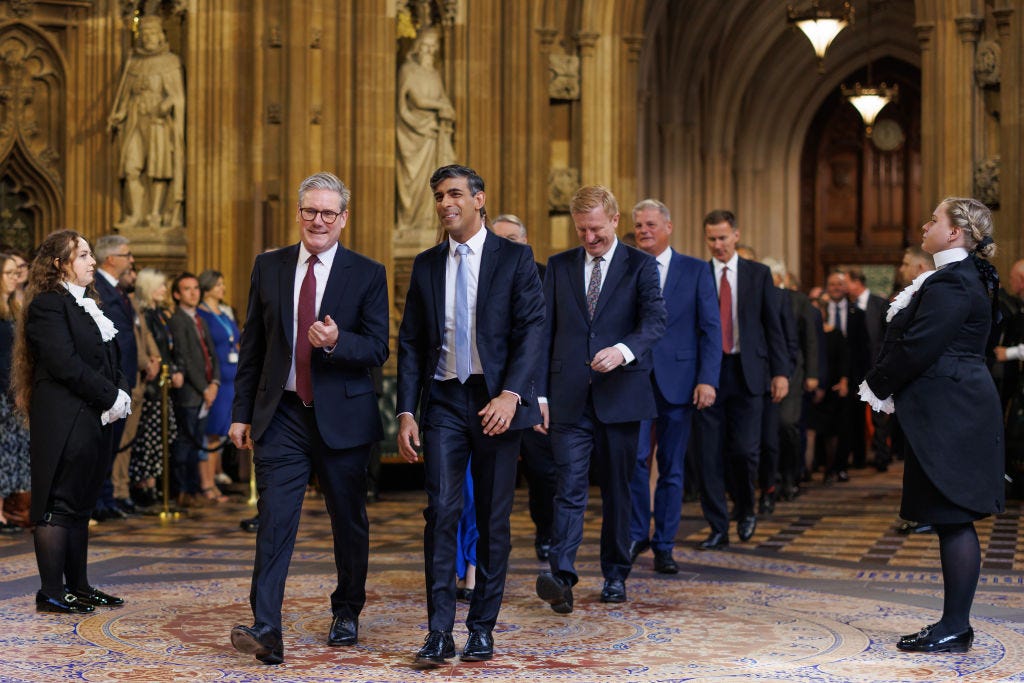Understanding the New Parliament
What do the backgrounds and affliations of our new MPs tell us about the next five years?
Less than two weeks into the life of the new government it is still in its optimistic phase. All crises are the fault of the last lot; mistakes can be waved off as teething problems; the Lobby is desperate for access; and rhetorical ambition can be passed off as a plan. Labour are aided in this by the sheer awfulness of the last few years, which makes the bar for apparent competence very low.
But we are already seeing early examples of the types of issue that will cause more pain as the months pass. For instance, opposition parties, and irreconcilable left-wing MPs, used the King’s Speech debate to highlight tensions within Labour over the two-child limit.
The vast majority of Labour MPs and advisers consider it to be an indefensible policy, given removing it would take 600,000 children out of poverty. Yet, almost by accident, it became, in opposition, a symbol of Keir Starmer and Rachel Reeves’ determination to emphasise fiscal prudence over redistribution.
It will fail to generate much public dissent from backbenchers for now, beyond the usual suspects. It’s too early for a substantial rebellion, and most internal critics of the policy will be content, for now, with the hurried announcement of a taskforce on child poverty, with hints this will cover the two-child limit.
But it’s indicative of the challenges the Labour leadership will face, over the coming months and years, in keeping their coalition together despite an effective majority over 180. Every government is in constant negotiation with the interest groups in their coalition, and this one will be no different. Understanding its composition is critical to assessing what the key battles will be.
Meanwhile the Conservatives are already into their leadership election, which is expected to conclude in October, with the party conference being the key opportunity for candidates to make their pitch. The balance of ideological and pragmatic interests amongst their diminished ranks will determine the final two candidates who are then put to a membership vote, and the ability of the winner to organise the party afterwards.
The Liberal Democrats have the more enjoyable problem of figuring out how to use a much bigger parliamentary party to cement their position and identify a clear role.
To help consider how this will play out I’ve gone through all the MPs elected to this Parliament – new and old – and looked at their career history and ideological associations. These are not perfect proxies. A charity worker can become a public spending hawk once in ministerial office. Some of New Labour’s most radical reformers were former Communists. But it gives a sense of the likely balance of power within the parties, and the issues their leaders are going to find most tricky.
Keep reading with a 7-day free trial
Subscribe to Comment is Freed to keep reading this post and get 7 days of free access to the full post archives.


